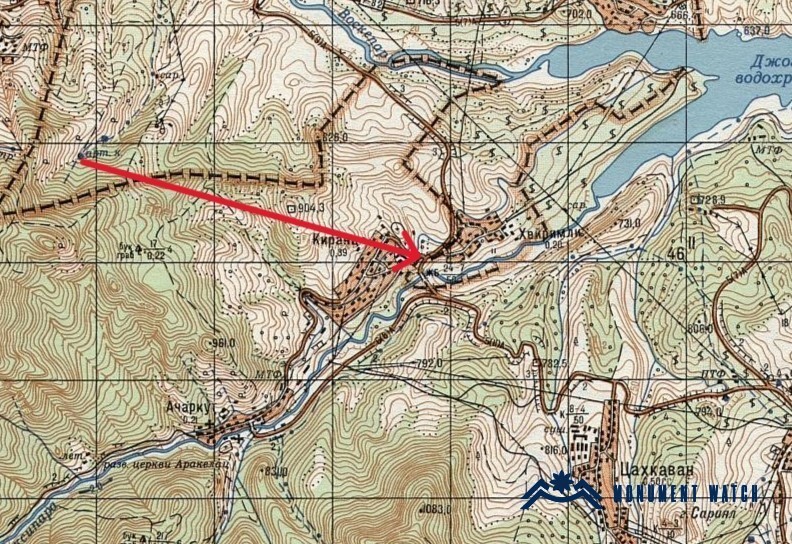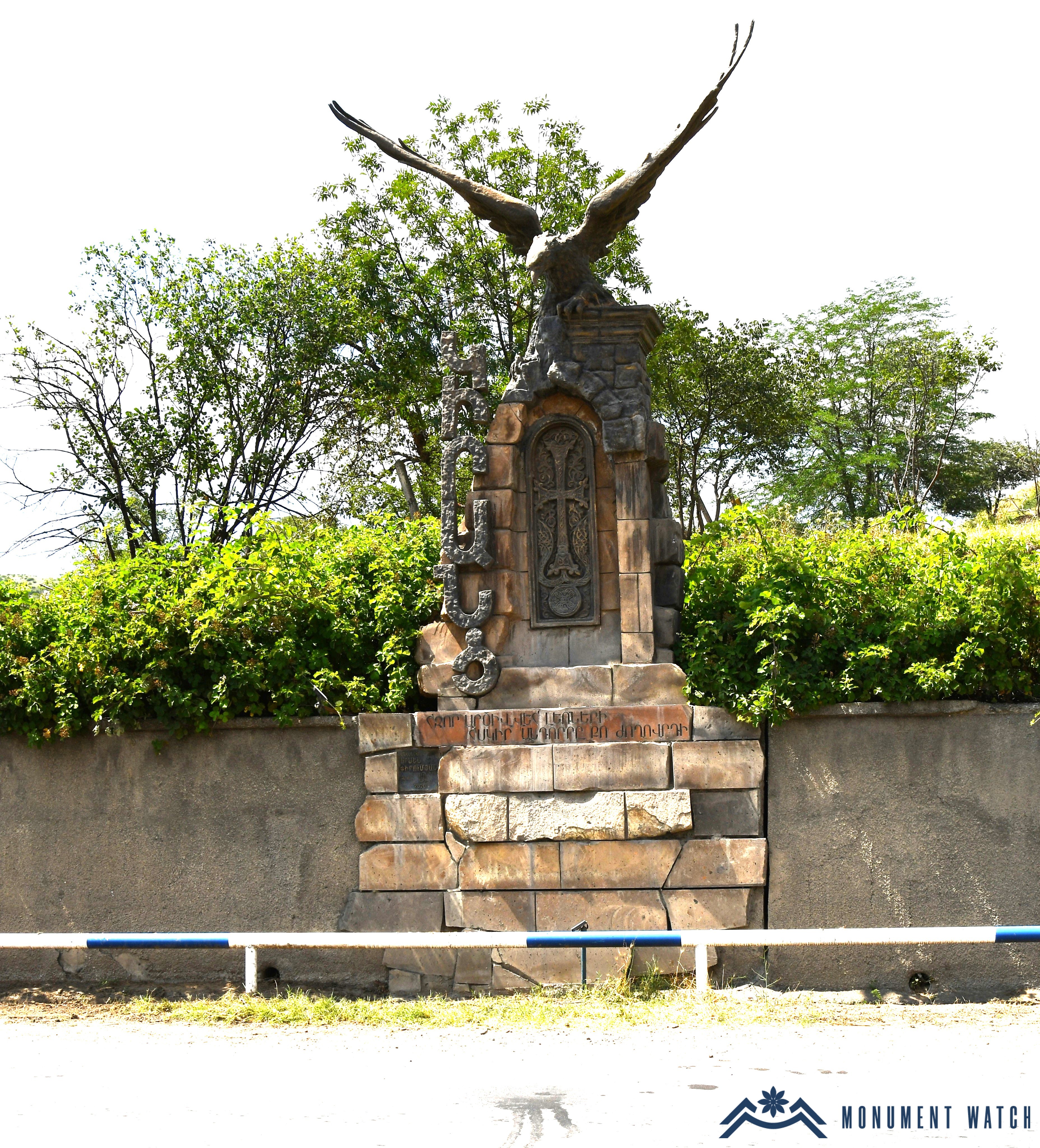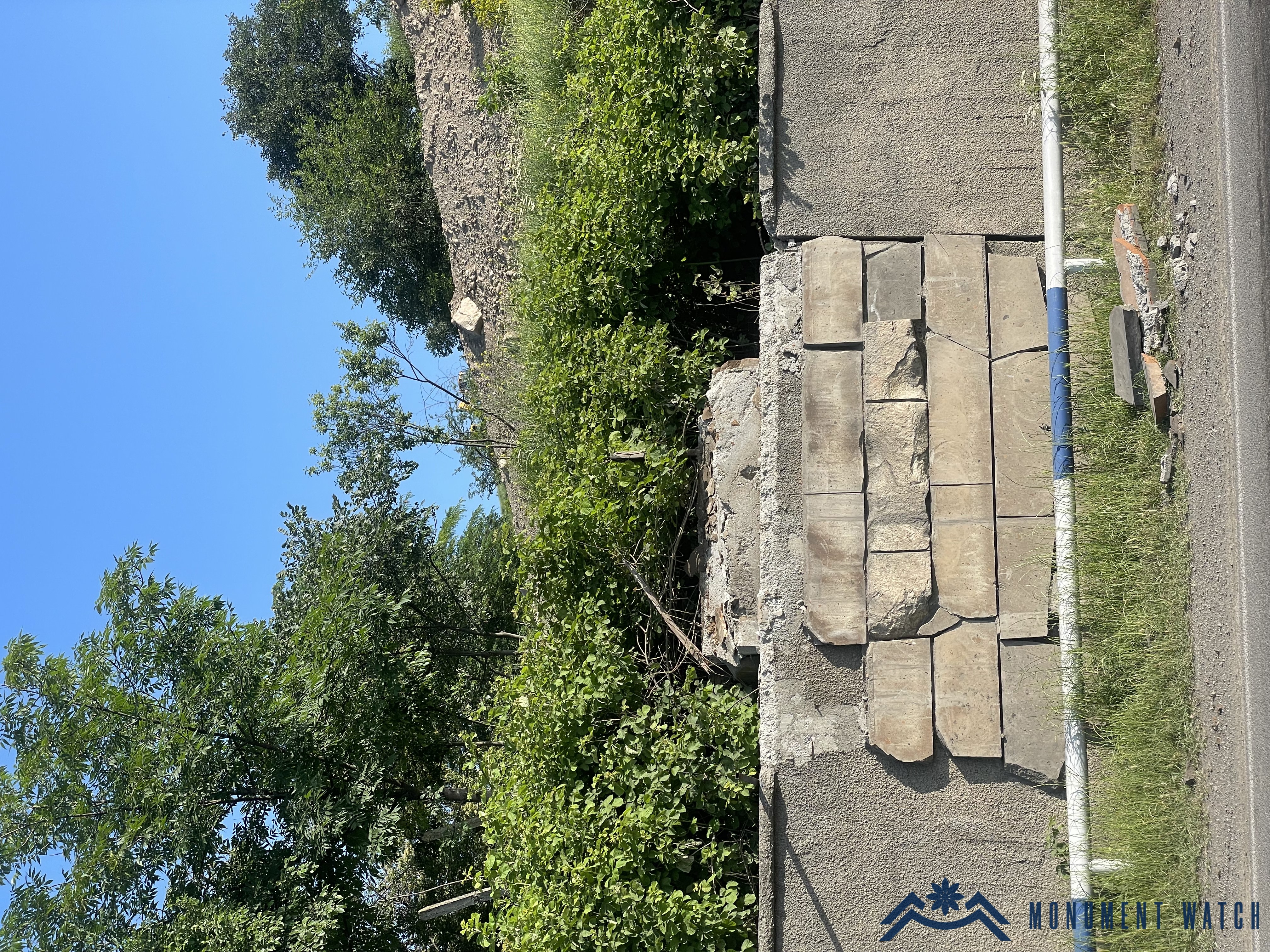“Eagle” Khachkar-Monument of Kirants Dismantled
Due to the border demarcation between the Tavush region of the Republic of Armenia and the Republic of Azerbaijan, the bridge and adjacent sections of the interstate road in the Kirants area, leading to Georgia, have come under Azerbaijani control. The new highway, initiated by the government, bypasses the bridge and connects to the St. Trinity (Surb Yerordutyun) Church of Kirants before rejoining the main road (https://www.azatutyun.am/a/the-entrance-to-kirantc-is-closed-/32953591.html).
On the section of the road that passed to the Azerbaijani side (Fig. 1), the "Eagle" khachkar monument, heralding the entrance to the village, was installed in 2020 under the patronage of Armen Pirumyan. This monument held deep symbolic meaning for the locals (Figs. 2, 3). However, due to the border demarcation, the villagers were compelled to dismantle the monument (Figs. 4, 5).
Our response
The Hague Convention of 1954, which serves as the foundation for various other international treaties, defines cultural value in its first article as "movable or immovable heritage of great importance to every people, regardless of origin or owner, such as monuments of architecture, art, or history, whether religious or secular in nature." According to Article 4 of the 1954 Hague Convention for the Protection of Cultural Property in the Event of Armed Conflict, any acts of vandalism, theft, robbery, misappropriation, hostilities, and reprisals against cultural heritage are strictly prohibited. Paragraph 1 of the Protocol stipulates that "Each Party undertakes to prevent the damage, export, or transfer to a third country of cultural values from the territory it occupies during an armed conflict." (http://portal.unesco.org/en/ev.php-URL_ID=15391&URL_DO=DO_TOPIC&URL_SECTION=201.html. It is important to note that Azerbaijan has accepted this protocol since September 20, 1993, and must adhere to its provisions (https://www.unesco.org/en/countries/az/conventions).




